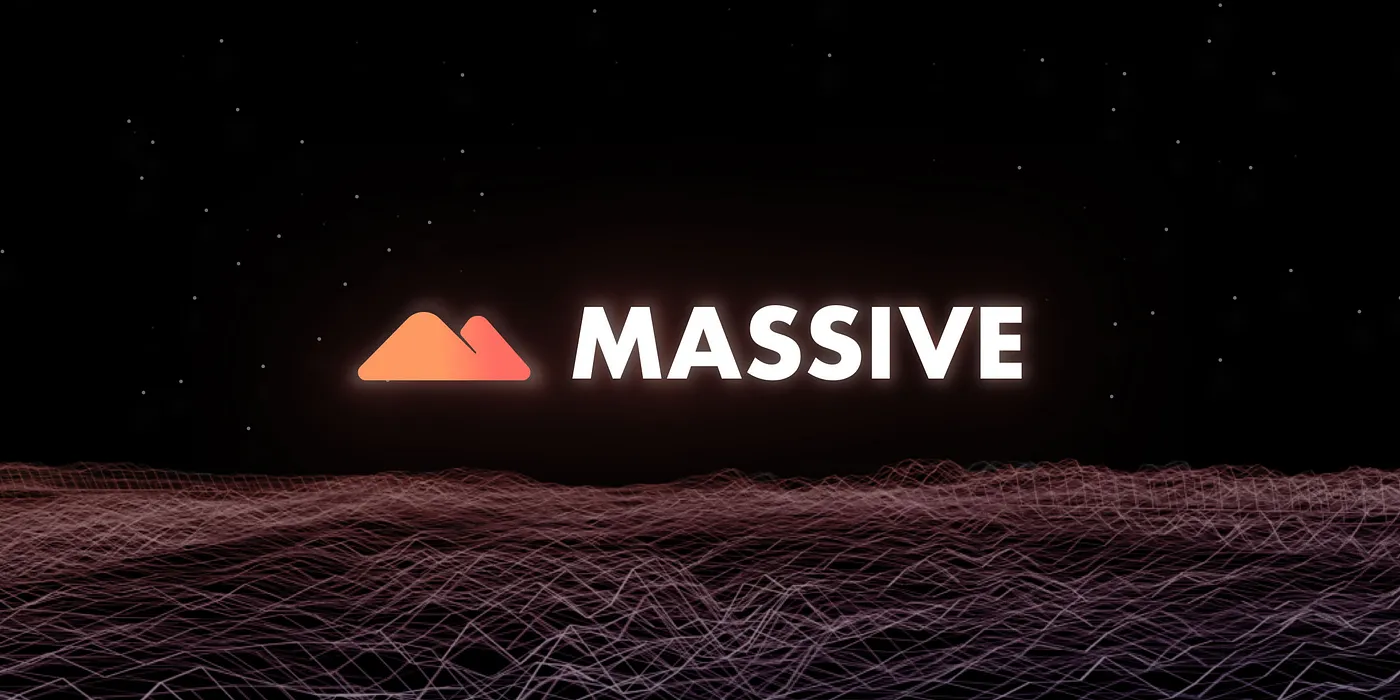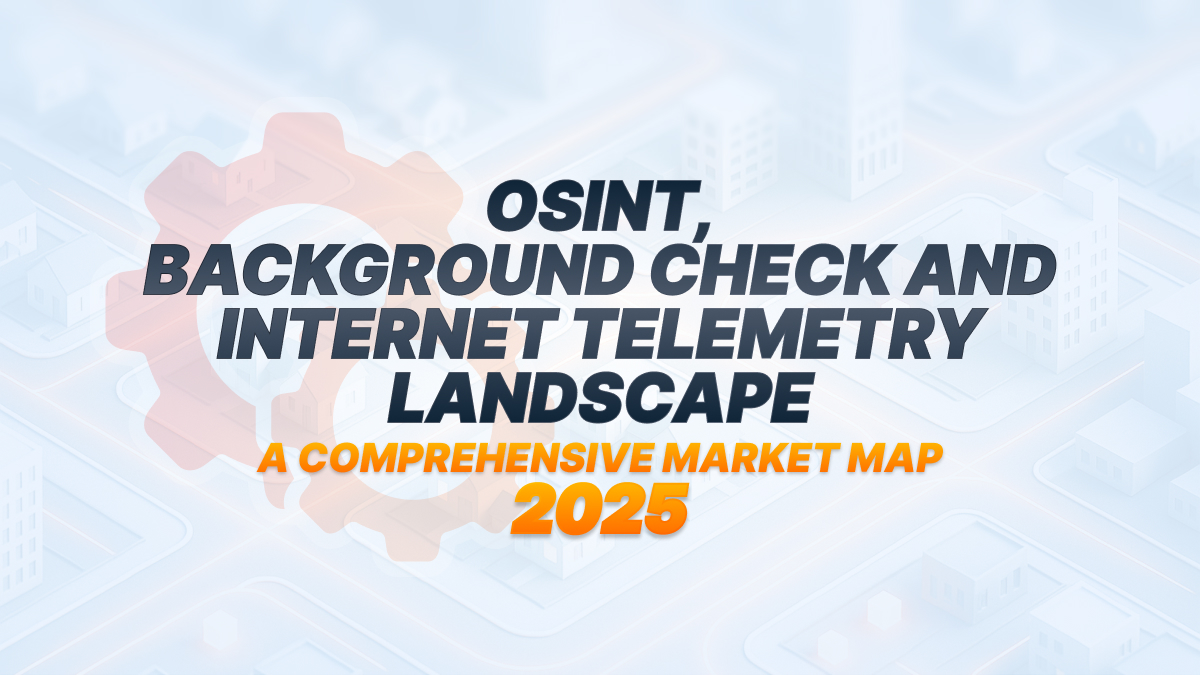TL;DR
Residential proxies typically cost $1.50-4.00/GB with pricing tiers based on volume: small plans ($3.00-4.00/GB), medium plans ($2.45-3.87/GB), large plans ($2.00-3.32/GB), and enterprise ($1.50-2.85/GB). Decodo leads with the lowest enterprise rates at $1.50/GB, while Massive offers uniform pricing across all geographic locations. Budget 30-40% above expected usage for overages.
Key costs: small business monitoring ($125-387/month), medium-scale scraping ($400-1,425/month), enterprise operations ($1,500-2,850+/month). Always factor in geographic targeting requirements and integration costs when budgeting.
If you're diving into the world of web scraping, data collection, or privacy protection, you've likely encountered the need for residential proxies. But with pricing models that can seem as complex as a tax code and costs ranging from pocket change to enterprise-level investments, understanding how to budget for residential proxies can feel overwhelming.
This comprehensive guide breaks down everything you need to know about residential proxy pricing in 2025. By the end, you'll have a clear understanding of what drives costs, how different pricing models work, and most importantly, how to budget effectively for your specific needs.
Understanding Residential Proxy Pricing Per GB Fundamentals
Before diving into specific numbers and plans, let's establish what makes residential proxy pricing tick. Unlike datacenter proxies, residential proxies use real IP addresses from actual internet service providers, which makes them more expensive but also more reliable and harder to detect.
The pricing complexity stems from several factors:
Traffic Volume: Most providers charge based on bandwidth consumption (GB used) rather than time-based subscriptions. This means your actual usage directly impacts your bill – scrape more data, pay more money.
Geographic Targeting: Want those coveted USA proxies? Many providers charge additional premiums for specific geographic targeting, though pricing varies significantly by provider. Some providers like Massive offer uniform pricing across all locations, while others may charge extra for high-demand regions.
Concurrent Sessions: The number of simultaneous connections you can maintain affects pricing tiers. More concurrent sessions mean higher costs but also greater scraping efficiency.
IP Pool Quality: Premium providers invest heavily in maintaining clean, fast IP pools. This quality comes at a price, but it's often worth it for the improved success rates and reduced blocks.
Residential Proxy Providers Pricing Models Explained
The residential proxy market has largely standardized around a few pricing approaches, each with its own advantages and considerations.
Pay-Per-GB Model
This is the most common pricing structure you'll encounter. Providers charge based on actual bandwidth consumption, typically ranging from $5-15 per GB depending on the provider and plan tier.
Here's how it typically breaks down:
- Small Plans: $3.00-4.00/GB for small volumes (1-10 GB)
- Medium Plans: $2.45-3.87/GB for moderate usage (25-50 GB)
- Large Plans: $2.00-3.32/GB for higher usage (100-250 GB)
- Enterprise: $1.50-2.85/GB for high-volume users (500+ GB)
The pay-per-GB model offers excellent flexibility since you only pay for what you use. However, it can make budgeting tricky if your usage patterns are unpredictable. Many businesses are surprised by higher-than-expected bills when their scraping operations scale up quickly.
Session-Based Pricing
Some providers offer session-based pricing, where you pay for the number of concurrent connections rather than bandwidth. Plans typically range from $300-1000+ monthly for packages including 100-1000+ concurrent sessions.
This model works well if you're doing lightweight scraping or need to maintain persistent connections. It's particularly popular for social media monitoring, price tracking, and other applications where you're pulling small amounts of data frequently rather than bulk scraping.
Hybrid Plans
Smart providers are increasingly offering hybrid models that combine elements of both approaches. You might get a base allocation of bandwidth with additional pay-per-GB charges beyond that threshold, or unlimited bandwidth within certain concurrent session limits.
How Much Do Proxies Cost: 2025 Residential Proxy Providers Pricing Comparison
Understanding residential proxy pricing per GB across different providers is crucial for making informed decisions. Here's a comprehensive comparison of leading residential proxy providers and their 2025 pricing structures:
<table class="GeneratedTable">
<thead>
<tr>
<th>Provider</th>
<th>Small (1–10 GB)</th>
<th>Medium (25–50 GB)</th>
<th>Large (100–250 GB)</th>
<th>Enterprise (500+ GB)</th>
</tr>
</thead>
<tbody>
<tr>
<td><strong>Massive</strong></td>
<td>$3.99/GB</td>
<td>$2.75/GB</td>
<td>$2.00/GB</td>
<td>$1.60/GB</td>
</tr>
<tr>
<td>Decodo</td>
<td>$3.00/GB</td>
<td>$2.45/GB</td>
<td>$2.00/GB</td>
<td>$1.50/GB</td>
</tr>
<tr>
<td>Oxylabs</td>
<td>$4.00/GB</td>
<td>$3.87/GB</td>
<td>$3.01/GB</td>
<td>$2.75/GB</td>
</tr>
<tr>
<td>Bright Data</td>
<td>$4.00/GB</td>
<td>$3.50/GB</td>
<td>$3.00/GB</td>
<td>$2.50/GB</td>
</tr>
<tr>
<td>NetNut</td>
<td>$3.53/GB</td>
<td>$3.45/GB</td>
<td>$3.32/GB</td>
<td>$2.85/GB</td>
</tr>
<tr>
<td>IPRoyal</td>
<td>$3.68/GB</td>
<td>$2.76/GB</td>
<td>$2.57/GB</td>
<td>$2.57/GB</td>
</tr>
<tr>
<td>Infatica</td>
<td>$4.00/GB</td>
<td>$3.84/GB</td>
<td>$2.90/GB</td>
<td>$2.60/GB</td>
</tr>
</tbody>
</table>
Pricing data based on actual provider websites as of 2025. Geographic pricing policies and additional features vary by provider.
Key Insights
Most Competitive Small Plans:
- Decodo: $3.00/GB (2 GB plan)
- NetNut: $3.53/GB (28 GB plan)
- IPRoyal: $3.68/GB
Best Medium Tier Value:
- Decodo: $2.45/GB
- Massive: $2.75/GB
- IPRoyal: $2.76/GB
Lowest Enterprise Rates:
- Decodo: $1.50/GB
- Massive: $1.60/GB
- Bright Data: $2.50/GB
Notable Features:
- Massive: Uniform pricing across all geographic locations
- Decodo: Lowest enterprise rates at $1.50/GB
- Oxylabs: Premium service with consistent scaling
- NetNut: Competitive entry-level pricing
Real-World Pricing Examples by Use Case
Let's get practical. Here are typical monthly costs for common residential proxy use cases in 2025:
Small Business Price Monitoring
- Usage: 50-100 GB/month
- Typical Cost: $125-387/month
- Best Model: Pay-per-GB with mid-tier pricing
If you're running a small e-commerce business monitoring competitor prices, you'll likely fall into this range. Providers like Massive and Decodo offer excellent value in this tier, with costs ranging from $125-200/month for 50GB.
Medium-Scale Web Scraping
- Usage: 200-500 GB/month
- Typical Cost: $400-1,425/month
- Best Model: Hybrid or volume-discounted pay-per-GB
This covers most growing businesses doing regular data collection for lead generation, market research, or content aggregation. At this scale, providers like Decodo and Massive offer the most competitive rates.
Enterprise Data Operations
- Usage: 1TB+ monthly
- Typical Cost: $1,500-2,850+/month
- Best Model: Custom enterprise pricing with dedicated support
Large organizations typically negotiate custom pricing that can bring per-GB costs down significantly. Decodo leads with $1.50/GB rates, while Massive offers $1.60/GB for the highest volumes.
Ad Verification and SEO
- Usage: 100-300 GB/month
- Typical Cost: $800-2500/month
- Best Model: Geographic-specific plans with session limits
These use cases often require specific geographic targeting and benefit from rotating proxy setups to avoid detection. Massive's uniform geo-pricing provides excellent value for this use case.
Geographic Pricing Variations
Not all proxy locations are created equal, and pricing reflects this reality. Here's what you can expect for different regions:
Tier 1 Locations (USA, UK, Canada, Australia)
Geographic pricing varies significantly across providers. While some traditional providers charge premiums for specific locations, others like Massive offer uniform pricing across all geographic locations, making premium targeting significantly more cost-effective. When evaluating providers, always check their geographic pricing structure, as this can impact your total costs substantially.
Tier 2 Locations (Western Europe, Japan, South Korea)
These locations offer a good balance of quality and cost, typically priced at 1.5-2x the base rate. They're often the sweet spot for businesses needing developed-market targeting without USA-level premium.
Tier 3 Locations (Global Mix, Emerging Markets)
The most cost-effective option, usually representing the base pricing tier. While they may have higher latency or lower success rates for some sites, they're perfect for general scraping needs.
Understanding this geographic pricing structure is crucial for budgeting. If your use case allows flexibility in location targeting, you can achieve significant cost savings.
Hidden Costs and Budget Considerations
Smart budgeting goes beyond the headline per-GB price. Here are additional costs that often catch users off-guard:
Setup and Integration Time: While not a direct proxy cost, factor in developer time for integration. Complex setups with mobile proxies or advanced rotation schemes can require significant technical investment.
Overage Charges: Many plans include overage fees that can be substantially higher than base rates. Always understand the overage structure and set up billing alerts.
Geographic Premium Fees: Some providers charge additional fees for accessing premium locations on top of higher per-GB rates. Read the fine print carefully.
Support and SLA Costs: Enterprise-grade support and service level agreements often come with additional monthly fees, sometimes 20-30% of your base plan cost.
Compliance and Legal Considerations: Depending on your industry, you may need additional compliance features or legal reviews, adding to your total cost of ownership.
Smart Budgeting Strategies
Over the years in the industry, countless businesses have both overspent dramatically and gotten caught short by unexpected costs. Here are proven strategies for effective proxy budgeting:
Start Conservative, Scale Gradually
Begin with smaller plans and monitor your actual usage patterns for 2-3 months before committing to larger packages. Most providers offer plan upgrades, but getting refunds for unused capacity is much harder.
Build in a 30-40% Buffer
Proxy usage can be unpredictable, especially when scraping dynamic sites or dealing with increased blocking. Budget for 30-40% more than your expected usage to avoid overage charges and operational disruptions.
Negotiate Volume Discounts Early
Even if you're not currently at enterprise scale, establishing a relationship and discussing growth plans can unlock better pricing. Many providers offer growth pricing that scales with your usage.
Consider Multi-Provider Strategies
For critical operations, having backup providers can prevent costly downtime. Budget for a secondary provider at 20-30% of your primary capacity.
Factor in Seasonal Variations
E-commerce price monitoring, travel data collection, and many other use cases have seasonal peaks. Plan for these variations rather than being surprised by December's bill.
Choosing the Right Plan Structure
The key to effective budgeting is matching your plan structure to your usage patterns. Here's how to think about it:
Predictable, Steady Usage: If you're running consistent daily scraping operations, pay-per-GB plans with volume discounts typically offer the best value. Look for providers offering commitment discounts for 6-12 month terms.
Variable, Bursty Usage: For occasional large projects or irregular scraping needs, consider session-based or pay-as-you-go models. While the per-unit costs may be higher, the flexibility prevents paying for unused capacity.
Mixed Requirements: Hybrid plans work well when you have both steady baseline usage and periodic large projects. The base allocation covers your regular needs while pay-per-GB overages handle spikes.
Avoiding Common Budgeting Mistakes
Many businesses make expensive mistakes that are easily preventable with proper planning:
Underestimating Geographic Requirements: Assuming global proxies will work for all use cases, then discovering you need premium locations for critical targets. This can double or triple your costs overnight.
Ignoring Success Rate Impact: Choosing the cheapest option without considering success rates. A provider with 60% success rates at $8/GB is actually more expensive than one with 90% success rates at $12/GB.
Not Planning for Growth: Selecting plans that don't scale well with business growth. What works for 10GB/month rarely scales efficiently to 100GB/month.
Overlooking Free Proxy Risks: Being tempted by free proxy options without understanding the security and reliability implications. The real cost of free proxies includes compromised data, failed scraping operations, and security risks.
Future-Proofing Your Proxy Budget
The residential proxy market continues evolving rapidly. Here are trends that will impact pricing in 2025 and beyond:
Increased Demand for Premium Locations: As more businesses adopt data-driven strategies, competition for high-quality residential IPs in premium locations will intensify, likely driving prices higher.
Advanced Targeting Capabilities: Providers are offering increasingly sophisticated targeting options (ISP-specific, device-type targeting, etc.), which typically command premium pricing.
Enhanced Security Features: As data privacy regulations tighten globally, proxy providers are investing in additional security and compliance features, costs that are passed through to customers.
AI-Powered Optimization: Smart routing and AI-driven proxy selection are becoming standard features, potentially improving cost-efficiency by reducing wasted bandwidth.
Making Your Final Decision
When evaluating residential proxy pricing, remember that the cheapest option is rarely the most cost-effective. Consider the total cost of ownership, including:
- Base pricing and volume discounts
- Geographic targeting requirements
- Success rates and retry costs
- Support quality and response times
- Integration complexity and developer time
- Compliance and security features
- Scalability as your needs grow
Most importantly, choose a provider that aligns with your specific use case. A provider excellent for web scraping performance might not be optimal for ad verification, and vice versa.
Conclusion
Residential proxy pricing doesn't have to be a mystery. By understanding the fundamental pricing drivers, common models, and real-world cost ranges, you can build accurate budgets that scale with your business needs.
Remember that effective proxy budgeting is about more than finding the lowest per-GB price. Consider your total cost of ownership, plan for growth, and choose providers that offer the reliability and features your specific use case demands.
Whether you're just starting with basic residential proxy concepts or ready to implement an enterprise-scale solution, the key is starting with a clear understanding of your requirements and building from there.
Take time to properly evaluate your needs, test different providers with small-scale trials, and don't be afraid to negotiate. The residential proxy market is competitive, and providers want your long-term business. With proper planning and the insights from this guide, you'll be well-equipped to make smart, cost-effective decisions for your proxy infrastructure.
For more detailed guidance on implementation, check out our guide on how to use residential proxies and how to choose a proxy provider to ensure you're making the most of your investment.

I am the co-founder & CEO of Massive. In addition to working on startups, I am a musician, athlete, mentor, event host, and volunteer.
Customer reviews
Frequently Asked Question
What's the average cost per GB for residential proxies in 2025?
+
Residential proxy pricing per GB varies significantly by volume: small plans (1-10 GB) cost $3.00-4.00/GB, medium plans (25-50 GB) range from $2.45-3.87/GB, large plans (100-250 GB) cost $2.00-3.32/GB, and enterprise plans (500+ GB) range from $1.50-2.85/GB. Geographic targeting policies vary by provider - some charge additional fees while others maintain uniform pricing across all locations.
Are pay-per-GB or session-based plans more cost-effective?
+
It depends on your usage pattern. Pay-per-GB is typically more cost-effective for high-volume data scraping, while session-based pricing works better for lightweight, frequent requests like price monitoring or social media management. Calculate your expected GB usage and concurrent session needs to determine which model offers better value.
How much should I budget for USA residential proxies specifically?
+
Geographic pricing varies significantly by provider. Some providers charge premiums for USA-specific targeting, while others like Massive offer uniform pricing across all locations. Before budgeting, check your chosen provider's geographic pricing structure, as this can range from no additional cost to significant premiums depending on the provider's pricing model.
What hidden costs should I watch out for when budgeting?
+
Common hidden costs include overage charges (often 50-100% higher than base rates), geographic premium fees, setup/integration developer time, enterprise support fees, and compliance-related costs. Always ask for a complete fee schedule and factor in a 30-40% buffer for unexpected usage spikes.
How do I determine how many GB I'll need monthly?
+
Start by estimating your data collection requirements: pages scraped × average page size × frequency. For example, scraping 100,000 pages monthly at 500KB average size equals ~50GB. However, factor in retry requests, failed attempts, and varying page sizes. Most businesses underestimate initial requirements by 40-60%.
Is it worth paying more for premium proxy providers?
+
Generally, yes, especially for business-critical applications. Premium providers typically offer higher success rates (85-95% vs 60-75%), better geographic coverage, faster response times, and superior support. However, the pricing gap has narrowed significantly in 2025, with competitive providers like Decodo and Massive offering enterprise-grade features at $1.50-1.60/GB, making them excellent alternatives to traditional premium providers.
Should I use multiple proxy providers or stick with one?
+
For mission-critical operations, a multi-provider strategy is often worth the additional complexity. Budget for a primary provider (70-80% of capacity) and a secondary backup (20-30% capacity) to ensure operational continuity. This redundancy typically adds 15-25% to total proxy costs but prevents costly downtime.







